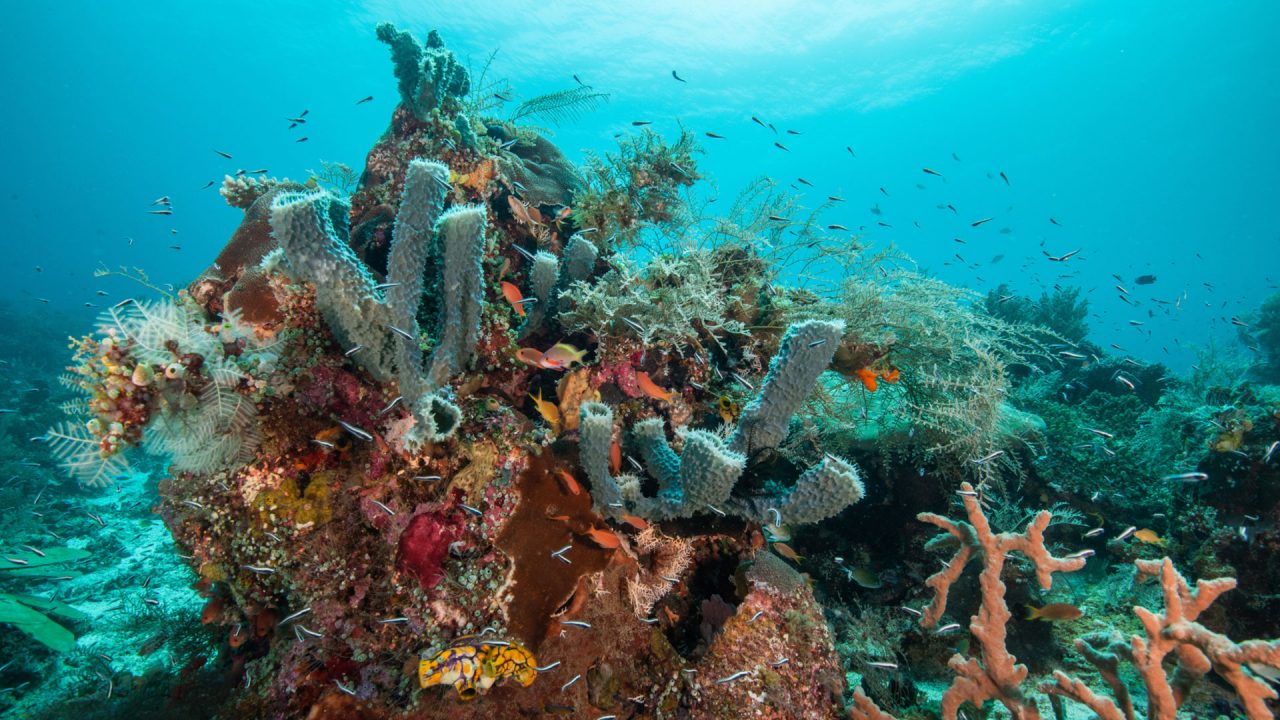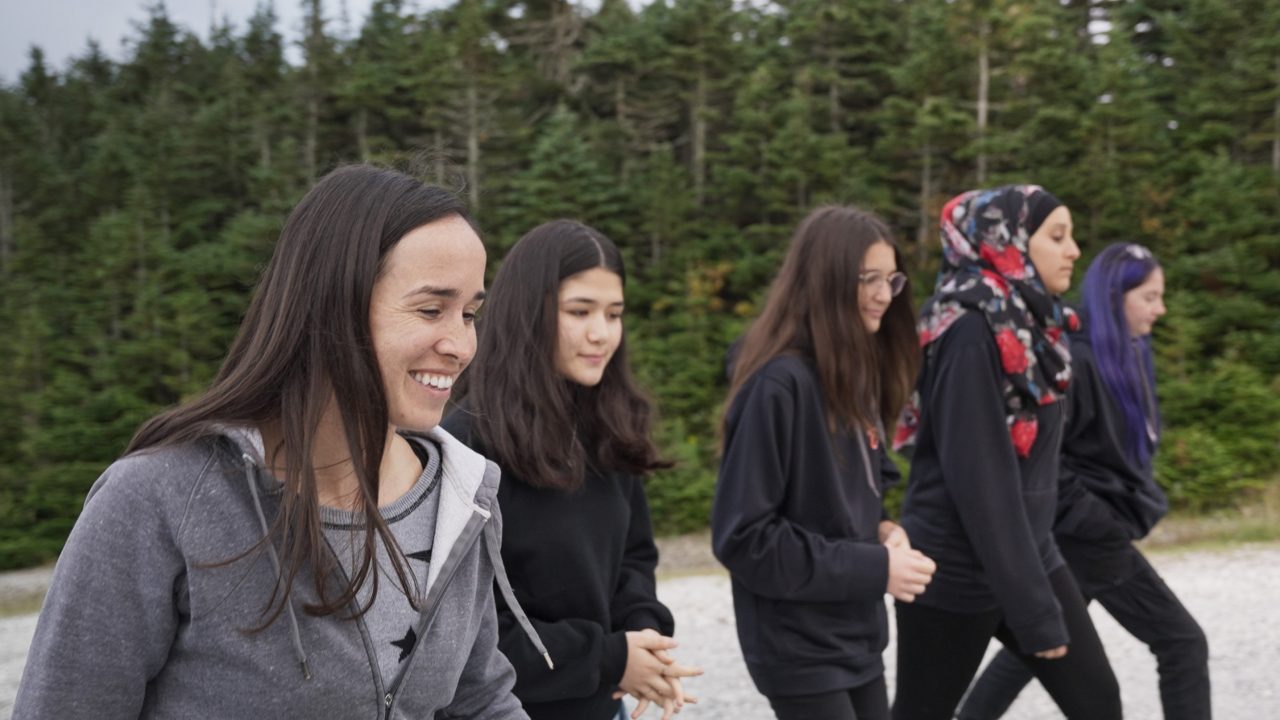
Mini-Lesson for Freedom Road
Mini-Lesson for Freedom Road
Mini-Lesson for Freedom Road
School Subjects:
- Social Studies—Contemporary Issues
- Civics and Citizenship Education—Provincial and Federal Government
- Indigenous Studies—History/Policy
Recommended Ages: 12-14

Keywords/Topics: Isolation, Water, Pride, Culture, Community Roles, Economy, Recovery, Assimilation, Colonization, Racism, Wellness
Overarching Question: What conditions are needed for a community to thrive?
Educational Synopsis: Freedom Road is a documentary series about life in the Anishinaabe community of Shoal Lake 40, which straddles the Ontario/Manitoba border near Kenora. The activities in this mini-lesson will help students understand the dehumanizing consequences that the construction of a drinking-water aqueduct for the city of Winnipeg had on this community. They included isolation, assimilation, poverty and many physical and emotional issues. But there is still hope. It is important for students to understand just how resilient the community is, as director Angelina McLeod clearly shows in this series. Students will learn about the work of different community groups that helped return Shoal Lake 40 to prosperity. It is our intention that students use this new knowledge to come up with other actions to help right the wrongs of the past and ultimately create the conditions for a more equitable future.
Activity 1: Irony
Before viewing the clip, have the students:
- discuss how water is essential to humans and create a document explaining its uses and why it is important in their community;
- look up the definition of the word “irony.” In a sharing circle, have them share their definitions of the term, followed by situations they have experienced that can be considered ironic.

After watching the clip, split the class into two groups.
Have one group discuss how Winnipeg benefited from the construction of the Shoal Lake to Winnipeg aqueduct. Ask them to list its positive impacts.
Have the other group discuss how the construction of the aqueduct—and particularly the lack of access to drinking water—affected the Shoal Lake 40 community. Ask them to list the negative impacts of the project and the lack of safe drinking water.
Once complete, have the groups share their lists.
Wrap up as a class by considering the following question in a sharing circle:
- Based on the lists of positive and negative effects, why do you think some would refer to the impacts and long-term effects of the aqueduct as ironic?
Summary
By prompting students to discuss the construction of the aqueduct, its long-term effects and the ironic nature of the issues, we hope they will come to see the degree to which colonization is a one-way street. Non-Indigenous Canadians benefited greatly from the project, while First Nations communities suffered disastrous injustices and repercussions that are still being felt today. The goal of this exercise is to allow students to gauge the degree to which they have benefited from the sacrifices imposed on Indigenous people. What makes the situation truly ironic is that this is not what should have happened.
Taking the Shoal Lake 40 community as an example, the direct impacts of isolation and the lack of safe water are apparent:
- Many people killed or injured because they were forced to drive or walk on ice roads;
- High unemployment rates;
- The need to boil water and the use of bottled water;
- Children who must leave the community to go to school.
Activity 2: Road to the Good Life
Create four islands with one posterboard or computer per island. Separate the students into groups. Assign each group one keyword. Based on their keyword, students must create a word splash of the positive and negative impacts of the Anishinaabe concept of mino-bimaadiziwin. Moving from one island to the next, groups will add words to each word splash. The keywords: Water, Isolation, Road, Hope. A sharing-circle discussion will conclude the activity.
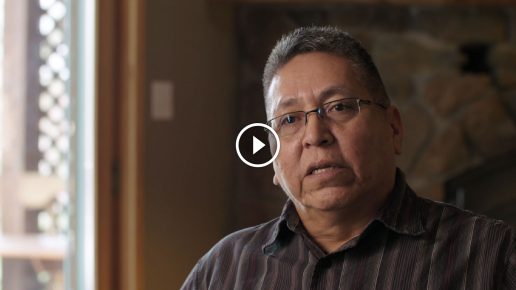
After watching the clip, have the students do a little research on the Anishinaabe concept of mino-bimaadiziwin. Then, bring them back together in a sharing circle (with the entire class or in smaller groups) to discuss the concept and the following questions:
- What factors contributed to the community’s isolation?
- What are the consequences isolation had on the community?
- Why is the construction of this road essential for the community?
- How are the construction of the road and the concept of mino-bimaadiziwin related?
After the sharing circle, instruct each student to create a collage of four or five images that represent their vision of the good life. Have on hand old magazines for clipping relevant images, as well as glue, scissors and construction or white paper. In a diary, have the students reflect on the similarities and differences between their concept of the good life and that of the Anishinaabe.
Summary
The goal of this activity is to educate students on the various challenges faced by many First Nations communities to achieve a standard of living comparable to that of other Canadians. Many of these communities have no running water and suffer from a serious lack of viable economic activities as a result of colonization. In contrast, the colonizers benefited tremendously from the many natural resources available on Indigenous land. In the case of Shoal Lake 40, the community is isolated and has no safe drinking water, while an aqueduct supplies Winnipeg with a virtually inexhaustible supply of clean water. The discussion will allow students to hone their critical-thinking skills by showing the injustice and irony of the situation. The intention of this exercise is to get students to see that there are tangible solutions to right the racist acts and policies of the past. For example:
- Fulfilling treaty promises and commitments;
- Renegotiating treaties and respecting Indigenous land claims;
- Providing compensation for the wrongs caused by the construction of the aqueduct;
- Providing adequate funding of social services;
- Respecting the sovereignty of Indigenous communities.
Lastly, students will be able to learn about the Anishinaabe concept of the good life and compare it to theirs to identify the many similarities and differences.
Activity 3: Everyone Plays a Role
Before watching the clips, break the class up into four groups for a jigsaw-technique learning exercise. Have each group discuss the responsibilities of one segment of the population in building a happy and stable society: men, women, youth and elders. Ask each group to appoint a secretary to take notes summarizing the group’s point of view. Then, show each group the clip for their assigned segment of society.


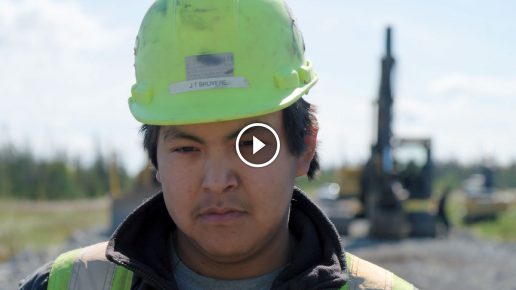
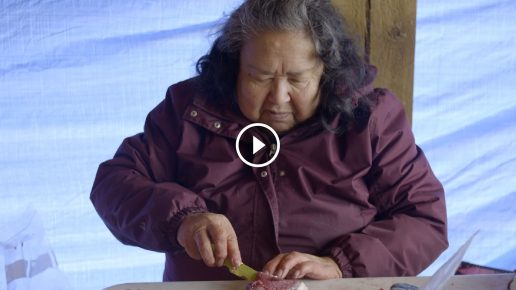
Based on what they learned from the clip, have each group update their list of responsibilities. Ask the secretaries to share their group’s thoughts with the rest of the class. To conclude, have students consider and give their personal answers to the following:
- What can non-Indigenous societies learn from this series about how Anishinaabe communities divide responsibilities among segments of the population? Do you agree with this division of responsibilities? Why?
Summary
Colonization, isolation and residential schools had many repercussions. The most serious come from the fact that through assimilation, Indigenous Peoples lost their traditional practices, concept of wellness, languages, spiritual traditions and roles of people within their communities. Fortunately, they are resilient. A number of Elders were able to preserve their heritage and pass it down to the youngest generation. In this activity, students will see how the Shoal Lake 40 community is made up of a large variety of people. They will also learn that each group in the community has specific responsibilities and a role to play in balancing the four facets of Anishinaabe wellness: mental, emotional, spiritual and physical health. To maintain a healthy community, everyone must understand and fulfill their responsibilities. In the end, our hope is that students will be able to use this Indigenous Knowledge and know-how to build a more conciliatory, stable and fair society.
Take Action
All non-Indigenous people have benefited in one way or another from the colonization of Indigenous Peoples. Have students research how their community, city, town or village directly benefited from colonization and how Indigenous communities in their region were adversely affected by this colonial development. Then ask them to create a presentation to educate their school community about the issues surrounding economic development in their community and how this development is often detrimental to the wellness of Indigenous Peoples. With that complete, ask the class—or each student individually—to write a letter to the Minister of Crown–Indigenous Relations Canada and/or the Minister of Indigenous Services. The purpose of the letter is to submit their recommendations to improve the living conditions for First Nations communities.
A francophone Métis from Manitoba, Joël Tétrault currently teaches Indigenous perspectives in the Louis Riel School Division in Winnipeg. A passionate educator, he has worked in education for 18 years, teaching mainly Canadian history, Indigenous perspectives, law and francophone cinema. For Joël, teaching means empowering students and encouraging them to take action to build a society that’s more just and equitable for all.
Pour lire cet article en français, cliquez ici.
Discover more Mini-Lessons | Watch educational films on NFB Education | Watch educational playlists on NFB Education | Follow NFB Education on Facebook | Follow NFB Education on Pinterest | Subscribe to the NFB Education Newsletter
